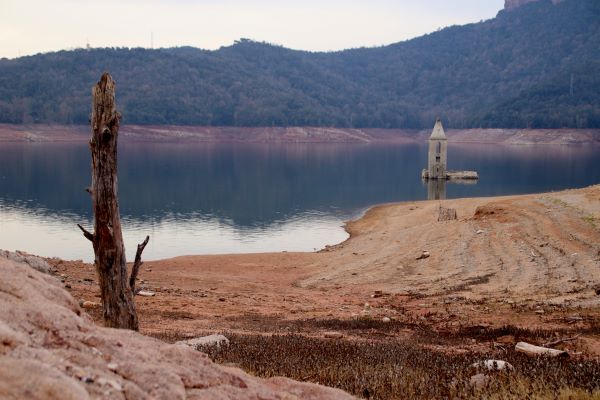Catalan reservoirs just over half full as authorities warn of potential drought
Desalination plants activated to slow water loss after months with little rain

Catalan reservoirs are at only 55% of their total capacity, around 30% less than exactly a year ago, leading authorities to activate the 'pre-alert' drought warning in the country.
Reservoirs in Catalonia's inner basins have 385 hm3 as of February 10, a figure significantly lower than last ten years' average on the same date, 522 hm3, given the persistent lack of rain over the past few months.
In order to slow down the loss of water, Catalonia's two desalination plants, on the Llobregat and Tordera rivers, are now increasing their production from 20%-30% of their capacity to 85%.
On Wednesday, agriculture minister Teresa Jordà recalled that "a drought has not been declared" – this would only happen if reservoirs were below 40% capacity.
In a statement in parliament, she said that the government "has to prepare for a possible drought," although she added that the Catalan Water Agency "is not alarmed" at the moment.
Jordà also explained that in January 2020 the government approved a plan to handle droughts that will give the relevant authorities "more tools for detection and action."
The minister answered a question by Socialist MP Joaquim Paladella, who offered the help of the main opposition party, and stated that cereal growers are the first people affected by the current water basin levels.
The abovementioned figures exclude the facilities built along the Ebre river basin, in western Catalonia, which are regulated by the Ebre's hydrographic confederation, managed by Spain – yet, reservoirs in the area are generally at lower than average levels.
Alert in northern Alt Empordà county
The situation is especially complicated in the Fluvià Muga aquifer, affecting 22 towns in the northeasternmost county in Catalonia, Alt Empordà. Since October 2021, there has been an active drought alert in the area, meaning that the maximum daily amount of water consumption allowed per inhabitant is set at 250 liters.
Restrictions in watering public green areas, cleaning streets, filling pools, and also filling fountains have been imposed.
Lack of rain
The situation is increasingly worrying due to the continued lack of rain. In the whole month of January, the overwhelming majority of the country registered between 0 and 20 mm, with only the western Pyrenees getting a much higher amount of water at around 100 mm.
Similarly, all of 2021 was a "warm and dry" year in Catalonia, with rainfall lower than average in the vast majority of the territory. According to the Catalan weather service, it was 70% of average in some areas of the Pyrenees, center, coast, and northeast of the country.
This decreased to half of the average in some specific areas in Alt Empordà, Vallès, Barcelonès, Baix Llobregat, Osona, Moianès, Montseny, Selva, Bages and Maresme areas, and was only higher than average in the area surrounding the Ebre river delta.